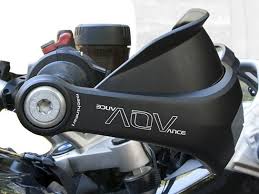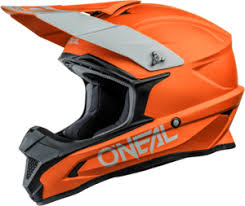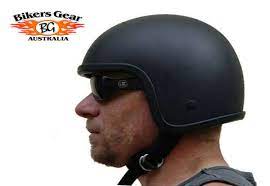Enhance Your Ride with Motorbike Hand Guards: Safety and Comfort Combined

The Importance of Motorbike Hand Guards
Motorbike hand guards are a crucial accessory for any rider, providing protection and comfort during rides. These guards attach to the handlebars of the motorcycle and shield the rider’s hands from various elements such as wind, rain, debris, and branches.
One of the key benefits of hand guards is their ability to protect the rider’s hands from extreme weather conditions. When riding at high speeds, wind chill can cause discomfort and even numbness in the hands. Hand guards act as a barrier against strong winds, keeping the rider’s hands warm and comfortable.
In addition to weather protection, hand guards also offer safety benefits. They provide a shield for the hands in case of an accidental impact with obstacles or debris on the road. By adding an extra layer of protection, hand guards can help prevent injuries and keep riders safe during their journeys.
Furthermore, motorbike hand guards can enhance the overall riding experience by reducing fatigue. By blocking wind resistance and reducing vibrations from the handlebars, hand guards can help riders maintain a more relaxed grip on the bike, leading to less strain on their hands and wrists.
Whether you are a casual rider or an avid motorcyclist, investing in quality hand guards is essential for your comfort and safety on the road. With various styles and designs available on the market, you can choose hand guards that not only provide functionality but also complement the aesthetics of your motorcycle.
In conclusion, motorbike hand guards are more than just an accessory – they are a practical necessity for every rider. From protecting against harsh weather conditions to enhancing safety and comfort, hand guards play a vital role in ensuring an enjoyable riding experience. So next time you hit the road, make sure your hands are well-equipped with reliable hand guards.
Essential FAQs About Motorbike Hand Guards: Everything You Need to Know
- What are motorbike hand guards?
- Why are hand guards important for motorbikes?
- Do hand guards fit all types of motorcycles?
- How do I install motorbike hand guards?
- What materials are motorbike hand guards made of?
- Do I need professional help to install hand guards on my motorcycle?
- Can I still use my motorcycle mirrors with handguards installed?
- Are there different styles or colours available for motorbike handguards?
What are motorbike hand guards?
Motorbike hand guards are essential accessories designed to provide protection and comfort to riders during their journeys. These guards attach to the handlebars of the motorcycle and serve as a shield for the rider’s hands against various elements such as wind, rain, debris, and branches. In addition to offering weather protection, hand guards also play a crucial role in enhancing safety by providing a barrier against accidental impacts with obstacles on the road. By reducing wind resistance and vibrations from the handlebars, hand guards can help prevent fatigue and ensure a more relaxed grip for riders, ultimately contributing to a safer and more comfortable riding experience.
Why are hand guards important for motorbikes?
Hand guards are essential accessories for motorbikes due to their multifaceted benefits. These guards play a crucial role in protecting riders’ hands from adverse weather conditions, such as wind, rain, and cold temperatures, ensuring comfort and safety during rides. Additionally, hand guards act as a shield against debris and obstacles on the road, reducing the risk of injuries from accidental impacts. Moreover, hand guards help minimise fatigue by blocking wind resistance and dampening handlebar vibrations, allowing riders to maintain a relaxed grip and ride more comfortably. Overall, the importance of hand guards for motorbikes lies in their ability to enhance rider comfort, safety, and overall riding experience.
Do hand guards fit all types of motorcycles?
The compatibility of hand guards with different types of motorcycles can vary depending on the specific make and model of the bike. While many universal hand guards are designed to fit a wide range of motorcycles, there may be certain limitations based on handlebar size, mounting options, and other factors. It is important for riders to carefully consider the specifications of hand guards and ensure they are compatible with their particular bike before making a purchase. Additionally, some manufacturers offer custom-fit hand guards specifically tailored to certain motorcycle models for a more seamless installation and optimal performance.
How do I install motorbike hand guards?
Installing motorbike hand guards is a straightforward process that can be completed with basic tools and a bit of patience. To install hand guards on your motorcycle, start by removing the existing handlebar grips and any end weights or accessories. Next, attach the mounting brackets provided with the hand guards to the handlebars using the appropriate hardware. Once the brackets are securely in place, slide the hand guard shells onto the brackets and adjust them to your desired position. Finally, tighten all screws and bolts to ensure a secure fit. It’s recommended to refer to the specific instructions provided by the manufacturer of your hand guards for detailed guidance on installation. With proper installation, motorbike hand guards can provide added protection and comfort during your rides.
What materials are motorbike hand guards made of?
Motorbike hand guards are typically made from a variety of durable materials to ensure optimal protection and longevity. Common materials used in the construction of hand guards include high-impact plastics, aluminium, carbon fibre, and composite materials. These materials are chosen for their strength, lightweight properties, and resistance to harsh weather conditions and impacts. By using a combination of these sturdy materials, motorbike hand guards are able to provide riders with reliable protection against wind, debris, and potential hazards on the road, enhancing both safety and comfort during rides.
Do I need professional help to install hand guards on my motorcycle?
When it comes to installing hand guards on your motorcycle, the need for professional help depends on your level of experience and comfort with DIY projects. While some riders may have the skills and tools necessary to complete the installation themselves, others may prefer to seek professional assistance to ensure a proper and secure fit. Factors such as the complexity of the installation process, the type of hand guards being used, and the specific make and model of your motorcycle can all influence whether professional help is needed. If you are unsure or inexperienced with such installations, it is always advisable to consult a professional mechanic or technician to ensure that your hand guards are installed correctly for optimal performance and safety on the road.
Can I still use my motorcycle mirrors with handguards installed?
One common concern among motorcyclists considering hand guards is whether they can still use their motorcycle mirrors with the guards installed. The good news is that many hand guard designs are compatible with motorcycle mirrors. By choosing the right type of hand guards that allow for proper clearance and positioning, riders can enjoy the benefits of both enhanced protection for their hands and the functionality of their mirrors. It’s important to select hand guards that are specifically designed to work alongside mirrors to ensure a seamless integration that does not compromise visibility or hinder the use of mirrors while riding.
Are there different styles or colours available for motorbike handguards?
When it comes to motorbike hand guards, riders often wonder about the variety of styles and colours available. Fortunately, the market offers a wide range of options to suit different preferences and motorcycle aesthetics. From sleek and modern designs to more rugged and adventure-ready styles, riders can choose hand guards that not only provide protection but also enhance the overall look of their bike. Additionally, many manufacturers offer hand guards in various colours, allowing riders to customise their motorcycles to reflect their personal style. Whether you prefer a classic black finish or a bold pop of colour, there are plenty of choices available to make your motorbike hand guards both functional and visually appealing.


